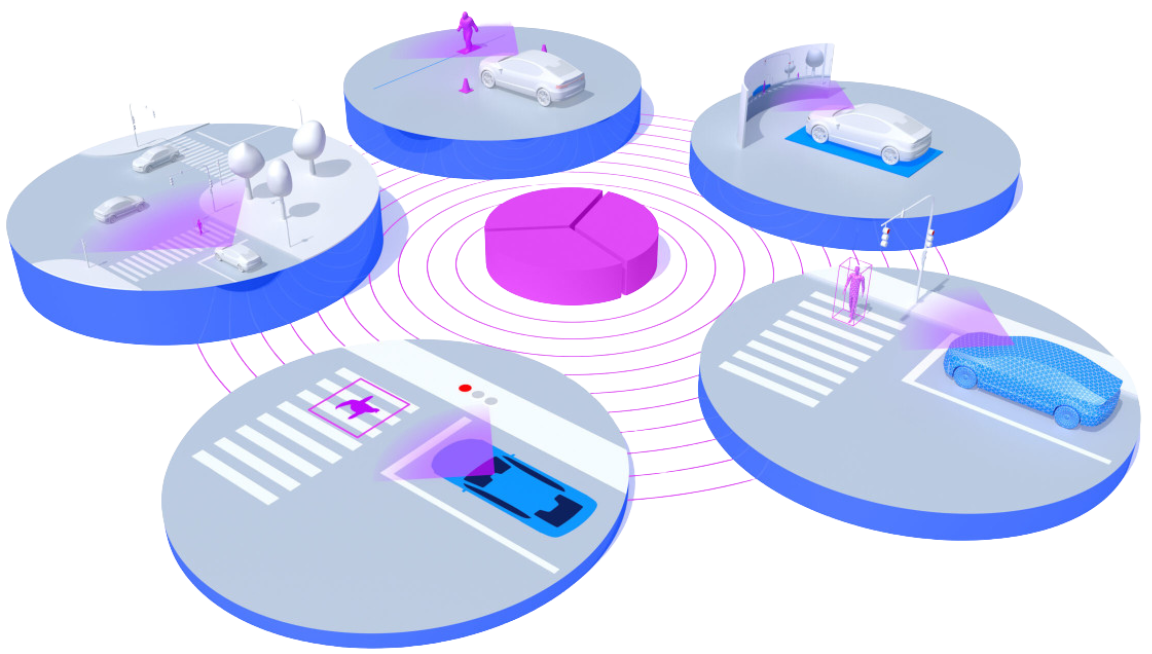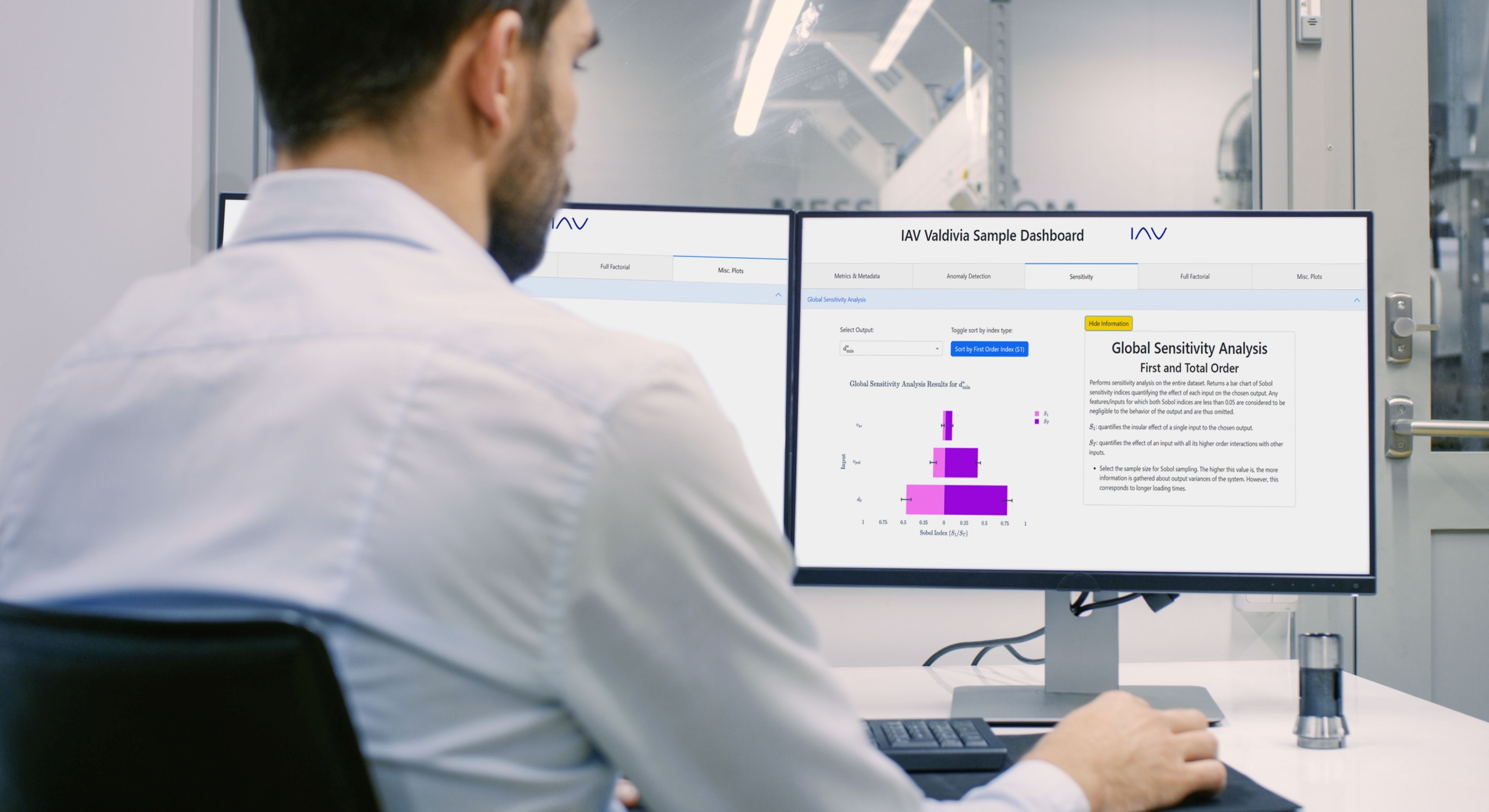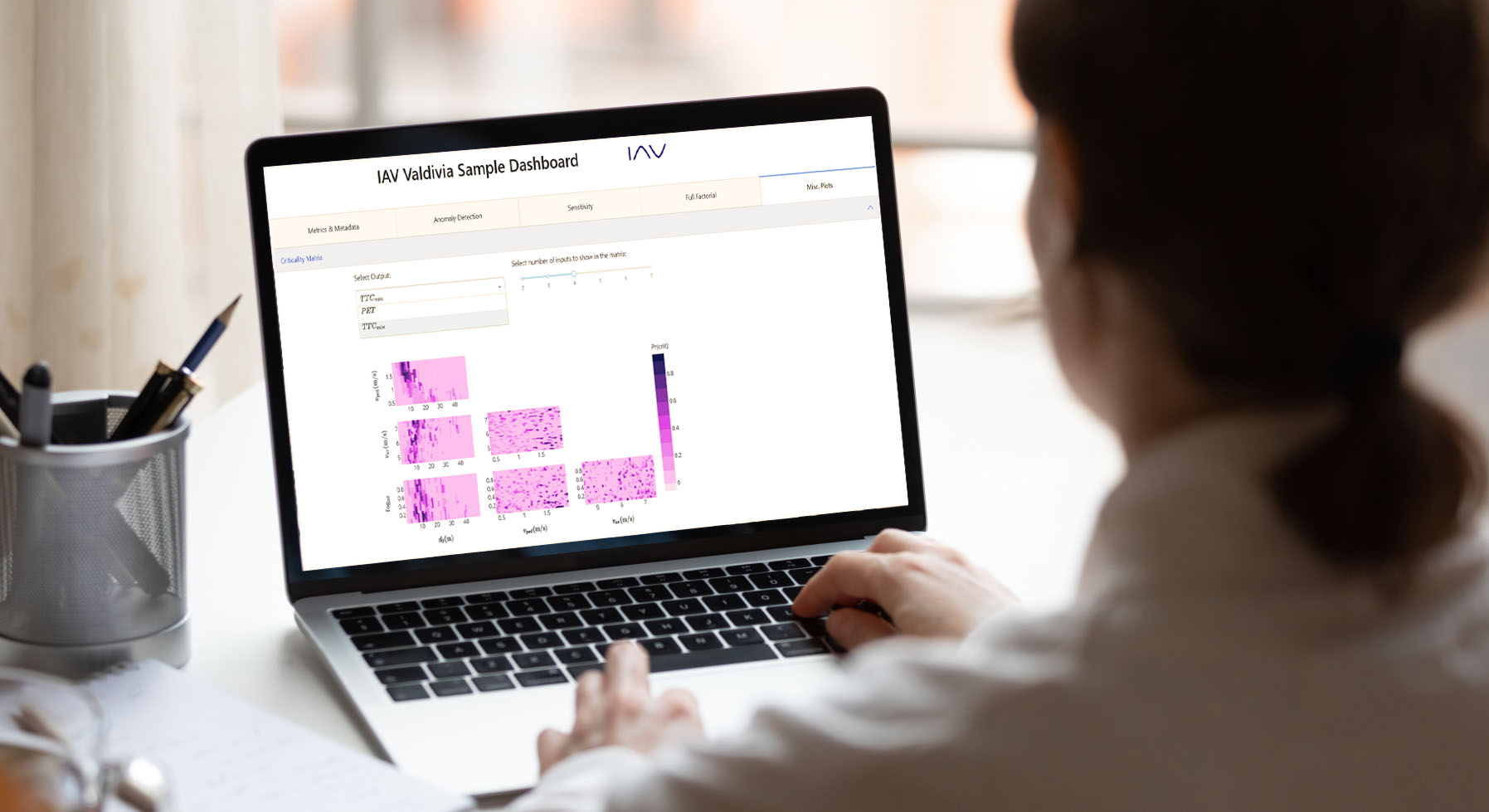IAV Valdivia Sample

Automatisierte Fahrzeuge müssen unzählige Szenarien sicher beherrschen. Doch angesichts der Vielzahl potenzieller Situationen ist es nicht möglich, alle zu testen. Hier setzt IAV Valdivia Sample an. Das Software-Tool unterstützt bei der gezielten Auswahl von Test-Szenarien und hilft, automatisierte Fahrfunktionen im Bereich ADAS und AD verlässlich zu testen. Mit diesem Ansatz können Kunden bis zu 80 % Testaufwand einsparen (exemplarische Berechnung, basierend auf Forschungsergebnissen).
Wie profitieren Sie davon?
- Generieren Sie nachvollziehbare Ergebnisse: IAV Valdivia Sample nutzt einen wissenschaftlich fundierten Ansatz mit modernsten probabilistischen ML-Modellen. Auf diese Weise bietet IAV Valdivia Sample einen transparenten Prozess und nachvollziehbare Entscheidungen.
- Gewinnen Sie Zeit und senken Sie Kosten: Die Software bietet die Möglichkeit, durch eine geringere Anzahl von Simulationen und weniger benötigte Berechnungszeit sowie Lizenzen, Ihren Testaufwand um bis zu 80 % zu verringern. Das führt zu Effizienzsteigerung und Kosteneinsparung.
- Ob in der Cloud oder lokal – einfach loslegen! IAV Valdivia Sample ist so konzipiert, dass es über REST-APIs in vollständig automatisierte Testumgebungen (SiL oder HiL) integriert werden kann. Die Lösung ist dabei Cloud-ready und kann als Software as a Service genutzt werden.
- Unzählige Anwendungsfälle für zahlreiche Industrien: Ursprünglich konzipiert für den Einsatz im AD-Bereich, kann das Tool überall dort eingesetzt werden, wo effiziente Modellbildungsmethoden zur Entwicklung oder Zulassung komplexer Systeme erforderlich sind – z.B. in der Energiewirtschaft oder Luftfahrt.
Wie funktioniert es?
IAV hat mit IAV Valdivia Sample eine Software entwickelt, die statistische Techniken und künstliche Intelligenz nutzt, um Testszenarien zu erzeugen. Dieser Prozess ist iterativ und passt sich eigenständig an das zuvor unbekannte System und dessen Eigenschaften an – denn jedes System hat seine eigenen Schwächen, die aufgedeckt werden müssen.
- Unterschiedliche Szenarien generieren: Die Testszenarien werden zunächst mit statistischen Techniken so generiert, dass eine breite Abdeckung erreicht wird und ganz unterschiedliche Szenarien berücksichtigt werden.
- KI kommt ins Spiel: Die Ergebnisse dieser Tests werden dann mithilfe von KI analysiert, um herauszufinden, welche Eigenschaften der Szenarien allein oder in Kombination kritische Ausgänge begünstigen. Dies kann z.B. das Zusammenspiel aus tiefstehender Sonne und nasser Straße sein.
- In Iterationen zu einem besseren Verständnis: Schließlich werden iterativ für das System kritische Szenarien erzeugt und deren Daten wiederum analysiert. Mit jeder Iteration können mehr Schwächen aufgedeckt und das System besser verstanden werden.
Unter Verwendung künstlicher Intelligenz geht dieses Verfahren über traditionelle Optimierungs- und Versuchsplanungsverfahren hinaus. Es zeichnet sich durch den Einsatz von probabilistischen Metamodellen und wiederholter, adaptiver Versuchsplanung (Adaptive Importance Sampling) aus. Mit den probabilistischen Modellen können letztlich Wahrscheinlichkeiten kritischer Szenarien berechnet werden, was eine messbare Basis für die Freigabeentscheidung von sicherheitskritischen Systemen darstellt.
Gemeinsam besser. Unsere Partner.


Kevin Schössow




